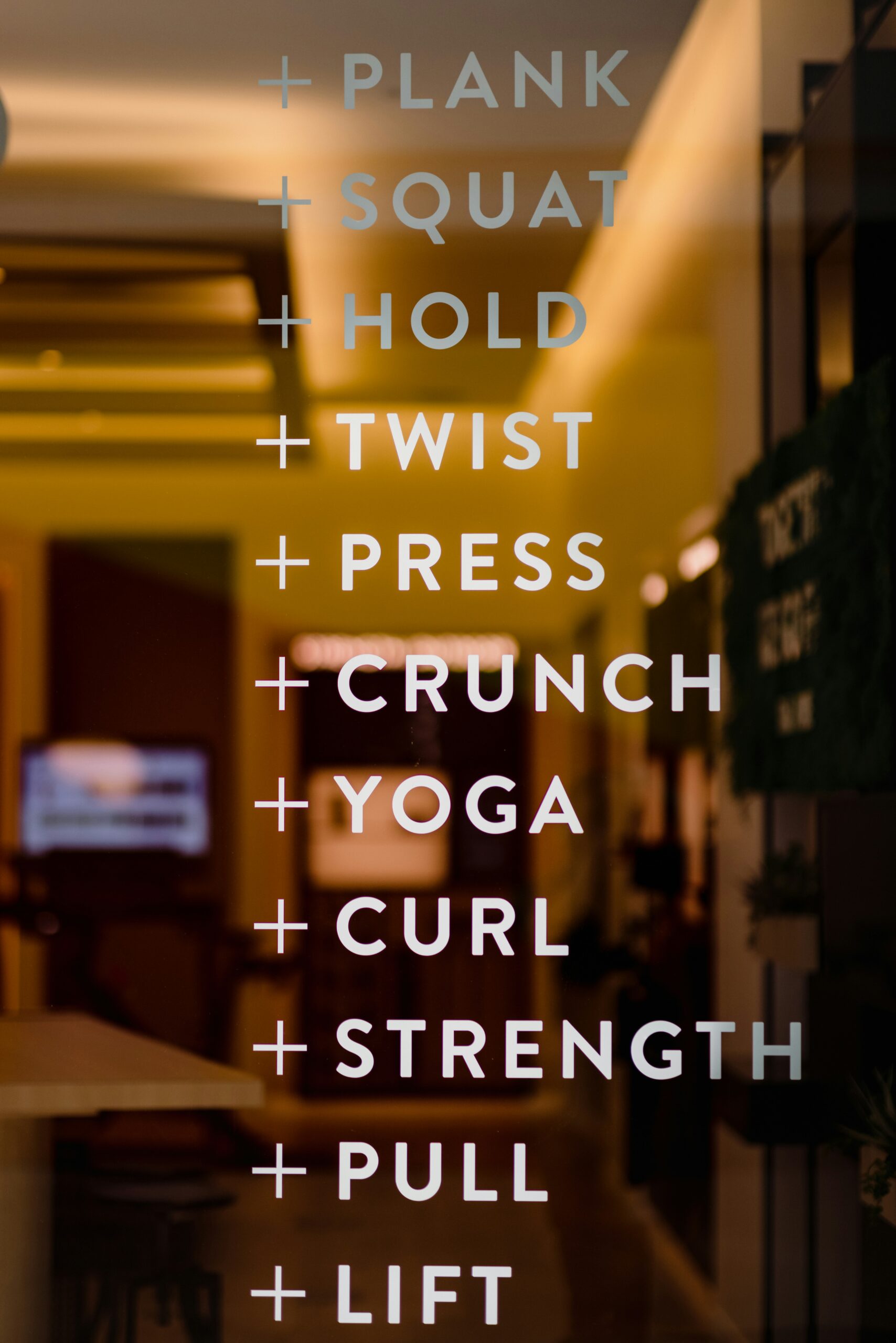An exercising chart is one of the simplest yet most effective tools you can use to stay committed to your fitness journey. Whether you’re a beginner aiming to build healthy habits or an athlete fine-tuning your training schedule, having a structured visual plan can make a huge difference. It helps you track progress, balance workouts, avoid overtraining, and stay motivated. In today’s busy world, where distractions are everywhere, an exercising chart is like your personal road map toward better health and performance.
In this guide, we’ll break down everything you need to know about creating, customizing, and using an exercising chart so it works for you—not against you.
What Is an Exercising Chart?
An exercising chart is more than just a list of workouts—it’s a structured, visual plan that outlines your entire fitness routine in an organized format. It works like a blueprint, helping you see exactly what you need to do, when to do it, and how long to do it for. Instead of waking up and wondering, “What should I train today?” your chart lays everything out for you, eliminating confusion and decision fatigue.
Typically, an exercising chart includes:
-
Workout Types: Cardio, strength training, flexibility, and mobility work.
-
Duration: How long each session will last, whether it’s 20 minutes or an hour.
-
Reps and Sets: For strength training, specifying how many repetitions and sets to complete.
-
Rest Days: Scheduled recovery to allow your body to heal and adapt.
-
Weekly or Monthly Goals: Targets to keep you motivated and focused.
Think of it as your personal fitness GPS—you know where you’re starting, where you want to go, and the chart maps out the fastest and safest route to get there.
Why You Need an Exercising Chart in Your Fitness Routine
Structure and Consistency
One of the biggest reasons people lose motivation is lack of structure. Without a plan, workouts become random and inconsistent, which can slow progress. An exercising chart removes that uncertainty by giving you a daily or weekly framework to follow. You’ll know exactly what’s coming up, which helps you build consistency—arguably the most important factor in achieving long-term fitness results.
Progress Tracking
A well-maintained exercising chart serves as a record of your hard work. By checking off completed workouts, you can see how far you’ve come over the weeks or months. This visual proof of progress can be incredibly motivating. For example, you might notice that you’ve increased your squat weight, shaved time off your mile run, or stretched farther than before—all because your chart has kept you consistent and focused.
Prevent Overtraining and Injuries
Without a clear plan, it’s easy to fall into the trap of doing too much, too soon. Overtraining can lead to fatigue, burnout, and even serious injuries. An exercising chart helps prevent this by balancing workout intensity with rest and recovery days. It ensures you’re training smart, not just hard, allowing your muscles to grow and your endurance to improve without unnecessary setbacks.
Types of Exercising Charts
Beginner’s Exercising Chart
This type of chart is designed for people who are just starting their fitness journey. It focuses on building a solid foundation through simple, low-impact activities such as brisk walking, light cycling, basic bodyweight exercises, and gentle stretching. The goal is to create a sustainable habit without overwhelming the body. A beginner’s exercising chart often starts with 2–3 workout days per week and gradually increases intensity as your stamina improves.
Weight Loss Exercising Chart
If your main objective is shedding extra pounds, a weight loss exercising chart will include high-calorie-burning workouts like HIIT (High-Intensity Interval Training), steady-state cardio, and full-body strength training. It will also integrate rest days and active recovery sessions to keep your metabolism active while avoiding exhaustion. This chart is particularly effective when paired with a healthy, balanced diet.
Muscle-Building Exercising Chart
For those aiming to gain muscle mass and strength, this chart focuses heavily on resistance training. It may follow a split routine—such as upper body one day, lower body the next—to target different muscle groups efficiently. Progressive overload, which means gradually increasing the weight or intensity, is a key feature of this type of chart. Rest days are strategically placed to allow muscles to recover and grow.
Flexibility and Mobility Exercising Chart
Perfect for dancers, athletes, or anyone wanting better range of motion, this chart emphasizes yoga, dynamic stretching, and mobility drills. It helps improve posture, prevent injuries, and enhance athletic performance. The chart can be tailored to focus on specific problem areas, such as tight hips or stiff shoulders, and is often combined with light strength work for overall balance.
How to Create an Effective Exercising Chart
Step 1 – Define Your Fitness Goals
Before designing your chart, you need to know exactly what you want to achieve. Do you want to lose weight, gain muscle, improve flexibility, or boost endurance? Your goal determines everything else—workout type, frequency, intensity, and duration. Without a clear goal, your exercising chart may lack focus, making it harder to track meaningful progress.
Step 2 – Choose the Right Exercises
Once your goal is set, select exercises that align with it. For balanced fitness, a good chart includes a mix of cardio (to improve heart health), strength training (to build muscle and bone density), and flexibility work (to prevent stiffness and injury). The key is variety—mixing different types of movements keeps workouts engaging and prevents plateaus.
Step 3 – Determine Frequency and Duration
How often can you realistically work out each week? Your answer should be based on your schedule, energy levels, and lifestyle. For some, 3 days a week is enough; for others, 5–6 days feels manageable. Your exercising chart should clearly state the length of each session—whether it’s a quick 20-minute home workout or a 1-hour gym session.
Step 4 – Add Rest and Recovery Days
Rest days are not “skipped” workouts—they are essential for progress. Without recovery, muscles can’t repair and grow. Your exercising chart should include at least 1–2 rest days per week, and possibly more for beginners. Active recovery activities, such as light yoga or walking, can be added to keep your body moving without overloading it.
H3: Step 5 – Track and Adjust
An exercising chart is not set in stone. Review and update it every 4–6 weeks to reflect your progress. If a workout feels too easy, increase intensity. If you’re feeling drained, adjust rest days. Tracking changes and adapting your plan ensures continued improvement without burnout.
Sample 4-Week Exercising Chart for Beginners
| Day | Workout Type | Duration | Notes |
|---|---|---|---|
| Monday | Light Cardio | 30 min | Brisk walk or cycling |
| Tuesday | Strength Training | 30 min | Bodyweight exercises |
| Wednesday | Rest or Yoga | 20–30 min | Gentle stretching |
| Thursday | Cardio Intervals | 25 min | Jogging + sprints |
| Friday | Strength Training | 30 min | Upper body focus |
| Saturday | Active Recovery | 20 min | Light walk or yoga |
| Sunday | Rest | — | — |
Tips to Get the Most Out of Your Exercising Chart
Be Realistic
One of the fastest ways to burn out is by creating an overly ambitious plan. When building your exercising chart, start small and choose a level of training that feels challenging but manageable. If you’re a beginner, this might mean just 2–3 workouts per week instead of daily sessions. As your strength and endurance improve, you can gradually increase the intensity, duration, or frequency of your workouts. The key is sustainability—your exercising chart should feel like a guide you can stick to for months, not a crash plan you abandon after two weeks.
Keep It Visible
An exercising chart is only useful if you remember to follow it. Place it somewhere you’ll see every day—on the fridge, next to your desk, or even taped to your bathroom mirror. If you’re using a digital version, set a reminder on your phone or sync it with your calendar. The more visible your chart is, the more likely you’ll be to stay on track. Treat it as your personal fitness checklist, reminding you that every day is an opportunity to make progress.
Use Color Coding
A simple way to make your exercising chart more engaging is through color coding. Assign different colors to various workout categories—for example, blue for cardio, red for strength training, and green for flexibility work. This visual separation makes it easier to read at a glance and ensures you’re maintaining a balanced routine. Plus, it can make the chart feel less like a “task list” and more like a fun, personalized plan.
Make It Interactive
Checking off completed workouts is surprisingly satisfying—and it’s a great way to build motivation. Turn your exercising chart into an interactive tool by physically marking completed days with a checkmark, sticker, or highlight. For digital charts, you can use progress bars or apps that track streaks. These small rewards create a sense of accomplishment and encourage you to keep going, even on days when motivation runs low.
Common Mistakes to Avoid When Using an Exercising Chart
Overcomplicating the Plan
It’s tempting to fill your chart with every exercise under the sun, but too much detail can make it overwhelming. You don’t need a minute-by-minute breakdown for each session—stick to the essentials like workout type, duration, and intensity. A simpler chart is easier to follow and less intimidating, increasing the likelihood that you’ll stick with it long term.
Ignoring Recovery Days
One of the most common mistakes in fitness is undervaluing rest. Skipping recovery days can lead to muscle fatigue, stalled progress, and even injury. Your exercising chart should have rest days scheduled just as deliberately as workout days. Recovery allows your body to repair, adapt, and come back stronger, so treat these days as a crucial part of your plan—not as “time off” from training.
Sticking to the Same Plan for Too Long
Your body is an incredible machine that adapts to repeated stress. If you keep following the same exercising chart for months without making changes, progress will slow down. Update your plan every 4–6 weeks—switch up exercises, adjust weights, increase reps, or try new training styles. This keeps your body challenged and your workouts exciting, which prevents boredom and plateaus.
Printable vs. Digital Exercising Chart – Which Is Better?
Printable Chart:
A printable exercising chart is perfect for people who prefer a physical, tangible reminder of their goals. You can hang it on the wall, keep it in a workout journal, or place it in a visible spot at home. The act of physically crossing off completed workouts can be incredibly rewarding. It’s also great for people who like to limit screen time or want something they can use without depending on devices or internet access.
Digital Chart:
A digital exercising chart offers flexibility, portability, and quick editing. You can store it on your phone, tablet, or laptop, and access it anytime—even at the gym or while traveling. Many fitness apps allow you to set reminders, log performance data, and automatically update progress. It’s ideal for those who love tech tools and want instant access to their plan wherever they go.
Combination Approach:
Some people find the best solution is to use both—a printed chart for at-home workouts and a digital version for the gym or travel. This way, you get the motivational benefit of seeing a physical plan while still enjoying the convenience of on-the-go tracking.
How an Exercising Chart Boosts Motivation
Visual Progress
One of the most powerful motivators is being able to see how far you’ve come. An exercising chart provides a visual record of your journey. Whether it’s seeing more checkmarks, fewer missed days, or improved performance notes, the evidence of progress is right in front of you. This tangible proof can fuel your drive to keep pushing forward, even on days when you feel tired or uninspired.
Accountability
An exercising chart acts as your silent workout partner. Once it’s written down, your plan feels more like a commitment than a suggestion. You can even share your chart with a workout buddy, coach, or online community for extra accountability. Knowing someone else might check in on your progress can give you that extra push to stick with your routine.
Goal-Oriented Approach
Having a chart means you’re working toward specific, measurable goals rather than just “trying to work out more.” Each workout session is a step toward a clearly defined objective—whether that’s running a 5K, improving flexibility, or building muscle. This goal-focused structure not only boosts motivation but also helps you measure success in a meaningful way.
Conclusion
An exercising chart is more than just a piece of paper—it’s your personal guide to a healthier, fitter lifestyle. By organizing your workouts, tracking your progress, and keeping your goals visible, it helps you stay consistent and motivated. Whether you’re just starting your fitness journey or pushing toward advanced goals, the right chart can make all the difference. Remember, success in fitness isn’t about doing everything at once—it’s about building steady habits, one workout at a time.
FAQs
Can an exercising chart work for home workouts?
Absolutely. An exercising chart can be adapted for both gym and home environments with ease. If you have limited equipment at home, you can fill your chart with bodyweight exercises like push-ups, squats, planks, and burpees, or use resistance bands and dumbbells if you have them. The beauty of an exercising chart is its flexibility—you can adjust the workouts to fit the space and resources you have, while still following a consistent plan. This makes it perfect for people who prefer working out at home or have a busy schedule that doesn’t allow frequent gym visits.
How often should I update my exercising chart?
It’s recommended to update your exercising chart every 4–6 weeks. This is because your body adapts to repeated movements over time, which can cause progress to slow down. By refreshing your chart with new exercises, adjusting repetitions, or changing workout intensity, you keep your body challenged and engaged. Updating regularly also prevents boredom, which is a common reason people abandon their fitness plans. Even small changes—like swapping jump squats for lunges or increasing your plank time—can make a big difference in results.
Can I use an exercising chart for sports-specific training?
Yes, an exercising chart can be an excellent tool for sports-specific training. Whether you’re training for football, swimming, tennis, or running, you can design a chart that includes drills, mobility work, and conditioning exercises targeted toward your sport. For example, a basketball player’s exercising chart might include plyometric jumps, agility ladder drills, and strength training for explosive power, while a swimmer’s chart could focus on core stability, shoulder strength, and endurance cardio. By customizing the chart, you ensure your training aligns perfectly with the skills and stamina your sport demands.
Should beginners follow a strict exercising chart?
Beginners benefit greatly from having structure, and an exercising chart offers that by giving a clear day-by-day plan. However, it’s important for newcomers to remain flexible in the early stages. Bodies need time to adjust to new movements, and sometimes unexpected muscle soreness or fatigue may require extra rest. A beginner-friendly exercising chart should be simple, realistic, and allow room for modifications. As your fitness improves, you can make the chart more structured and challenging while keeping recovery in mind.
Do I need an exercising chart if I already have a personal trainer?
Yes, an exercising chart is still valuable even if you work with a personal trainer. While your trainer guides you during sessions, a chart gives you a structured plan for the days you train alone. It ensures you stay on track between appointments and reinforces the techniques you’ve learned. In fact, many trainers create personalized exercising charts for their clients so they can continue progressing independently. This combination of professional guidance and self-managed tracking can lead to faster, more consistent results.

 Fitness tips for busy moms at home
Fitness tips for busy moms at home  Beginner fitness plan without equipment
Beginner fitness plan without equipment  The Best Fitness Routine for Beginners at Home: Your 4-Week
The Best Fitness Routine for Beginners at Home: Your 4-Week  Fitness Center vs Gym: Choosing Your Best Workout Fit
Fitness Center vs Gym: Choosing Your Best Workout Fit  The Importance of Physical Fitness Essay: Health and Mind Benefits
The Importance of Physical Fitness Essay: Health and Mind Benefits  A Practical Guide to Achieving Fitness Goals Through Sustainable Habits
A Practical Guide to Achieving Fitness Goals Through Sustainable Habits  Resistance Band Workout Guide for Strength, Flexibility, and Home Fitness
Resistance Band Workout Guide for Strength, Flexibility, and Home Fitness  Exercise Positions: The Complete Guide to Boost Strength, Flexibility, and
Exercise Positions: The Complete Guide to Boost Strength, Flexibility, and  Europe Airports Prepare for Busiest Ever Christmas Travel Season
Europe Airports Prepare for Busiest Ever Christmas Travel Season  Early Christmas Travel Threatened by Series of Storms in the
Early Christmas Travel Threatened by Series of Storms in the  Fashion as a Reflection of Social Movements.
Fashion as a Reflection of Social Movements.  Guess Showcases Ski Collection with High Altitude Fashion Show
Guess Showcases Ski Collection with High Altitude Fashion Show  2024: A Year of Dynamic Fashion Trends
2024: A Year of Dynamic Fashion Trends  European Court of Justice Scrutinizes FIFA and UEFA for Antitrust
European Court of Justice Scrutinizes FIFA and UEFA for Antitrust  Concerns and Controversies at the 2024 Summer Olympics.
Concerns and Controversies at the 2024 Summer Olympics.  Michael Smith’s Iconic Nine Dart Finish Stuns Sports World
Michael Smith’s Iconic Nine Dart Finish Stuns Sports World 


